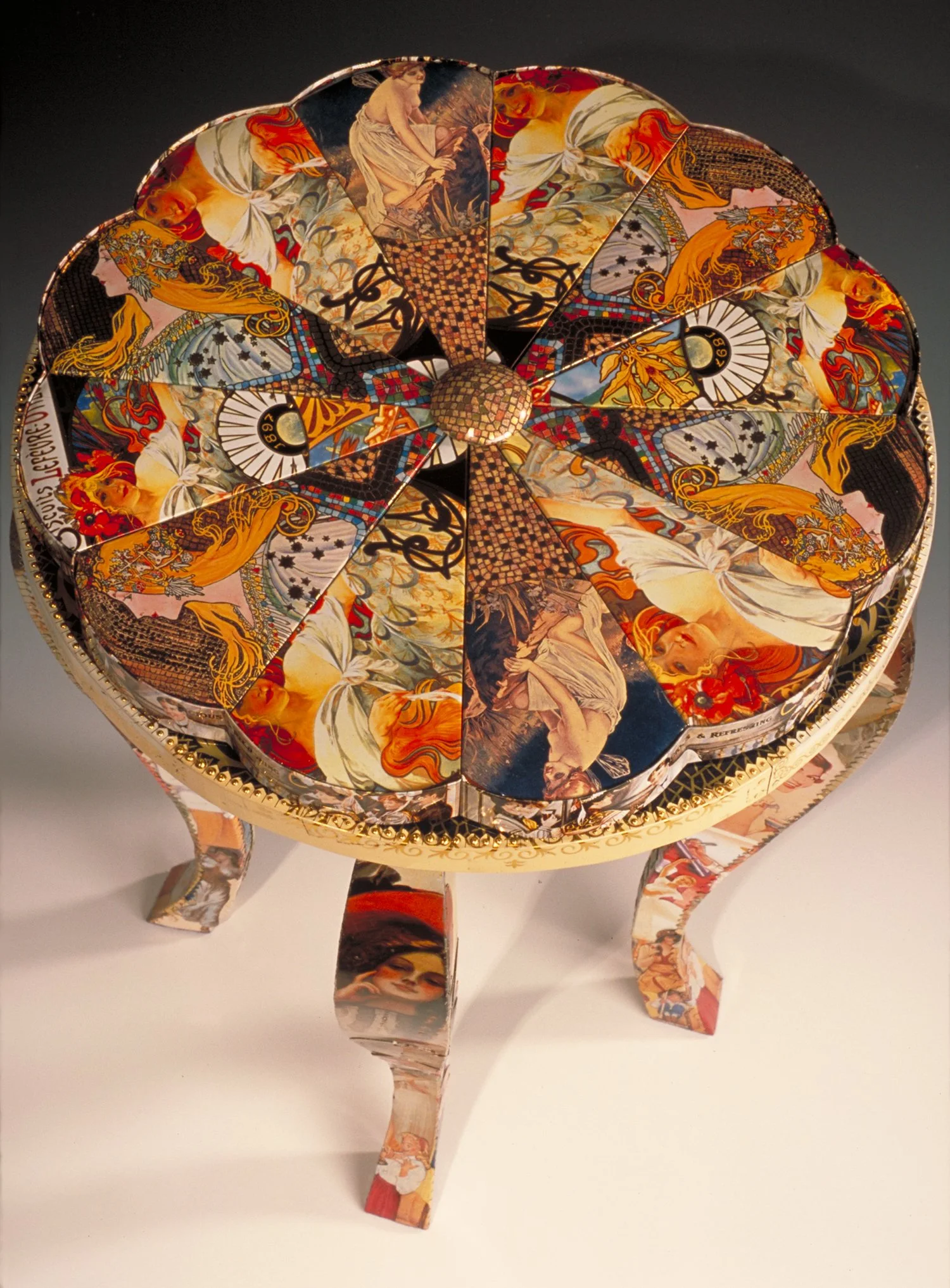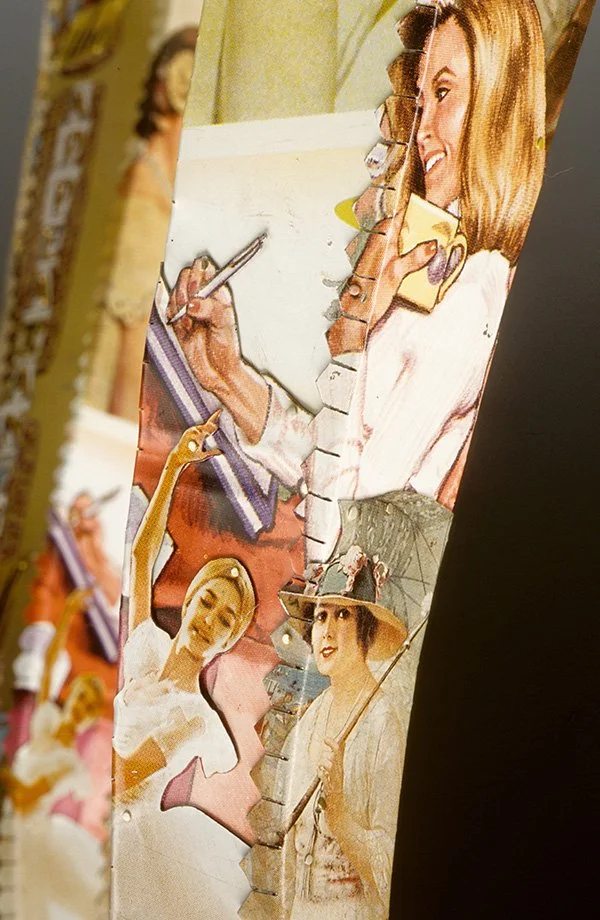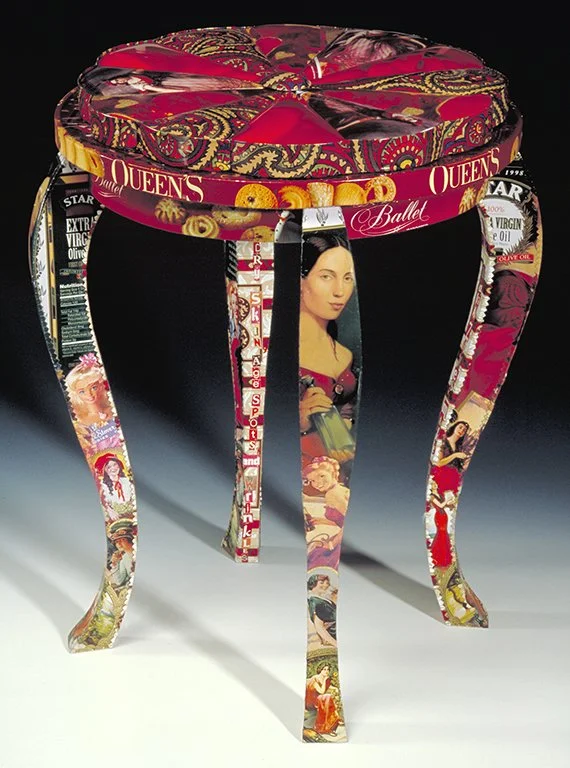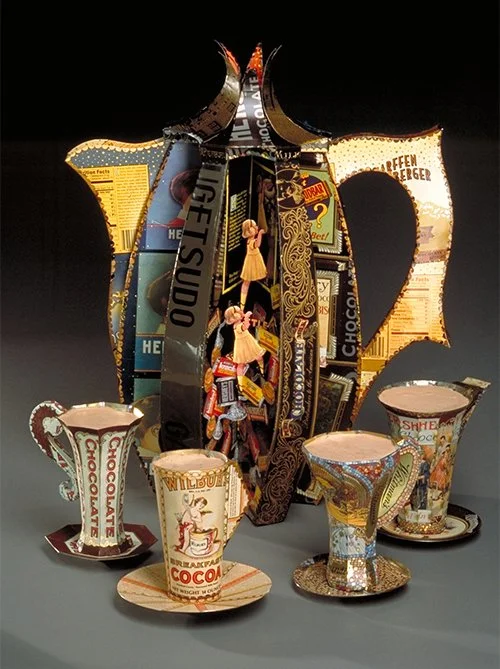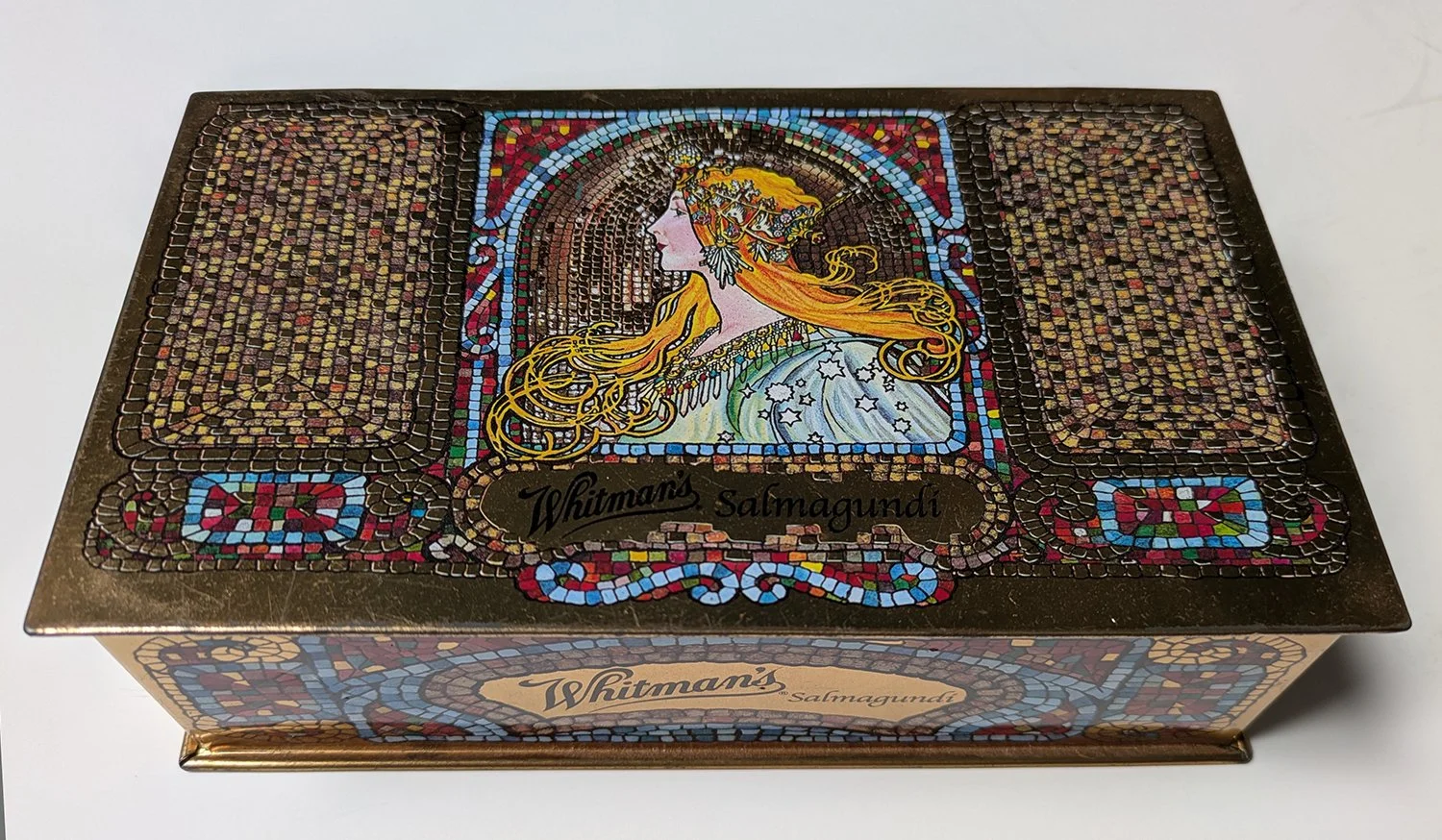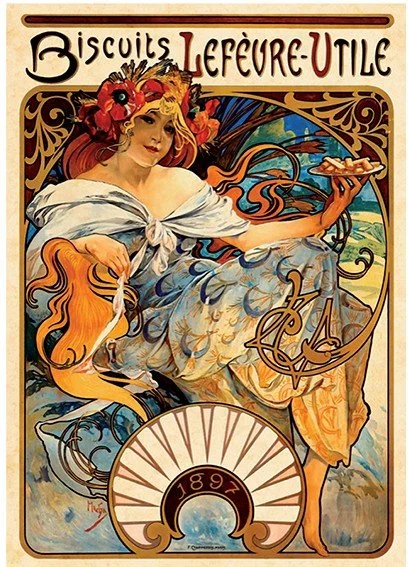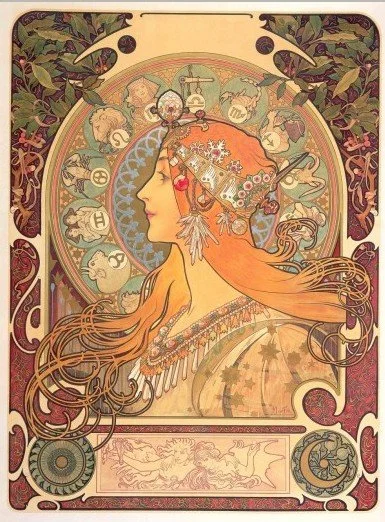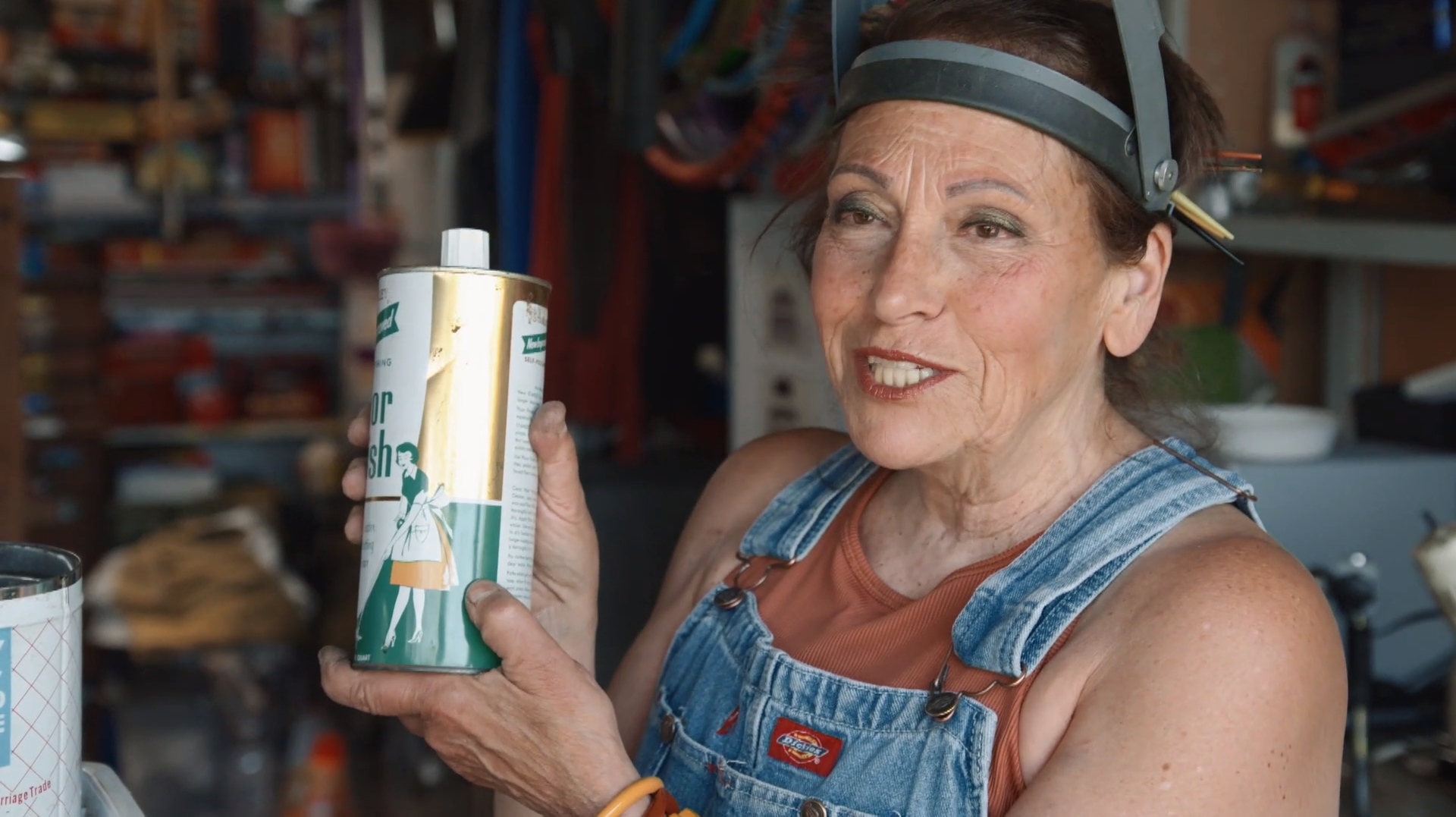Fading Identity
Fading Identity
Fading Identity is a sculpture that looks like a vanity seat, a fancy vanity seat for sitting at a vanity table. This vanity seat is constructed entirely from recycled tin cans. All of the tin cans are printed with advertising that portrays women as perfect, beautiful, and desirable. It is no wonder that so many women attempt to conceal their appearance through cosmetics and cosmetic procedures when subliminal messaging informs them that their value decreases with age.
Recycled tin cans, 10k gold rivets, aluminum rivets, stainless steel screws, plastic reinforcement for button.
Dimensions: 19" H x 14.5" W of seat x 15" D
Available for purchase or exhibition
Look closely at the image below. The vanity seat cushion is constructed as if it were made from fabric, but it is all metal, recycled tin cans. Even the button in the center is tin cans. Each section of the cushion is another image of a woman and stereotypical standards of beauty.
Do you see images you recognize? The kneeling woman with bare breasts if from White Rock Beer. Moving to the right, is a Art Nouveau woman by Alphonse Mucha 1897 that was originally advertising for Biscuits Lefevre Utile. Continue clockwise around the cushion to the woman with stars and flowing orange hair from a color lithograph, “Zodiac” by Alphonse Mucha 1896 that was printed on a Whitman’s Chocolate tin.
You can look at these vintage images of woman selling food as old fashioned or archaic, but women are still used to sell food as “delicious and refreshing.” Look at the edge of the cushion in the next image. It says “delicious and refreshing,” from Pepsi-Cola advertising. The words used in advertising that describe both food and women.
The cushion for the vanity seat looks like fabric but it is constructed from tin cans.
The cushion sits on the top of the vanity seat. The beige and gold metallic printing are from a late 19th century, early 20th century English Biscuit Tin for Biscuit Manufacturers. Peek, Frean and Co, LTD.
The brass grommets around the edge gradually vary in size. The refinement of craftsmanship in the fabrication is part of my aesthetic, a tribute to craft, and a commentary about perceptions of value. I work with non-precious materials, recycled tin cans, packaging that would normally be thrown away…. and use this materials as if it were fine silk or precious gold and silver. The values of advertising have a cost in our society we do not measure.
In the photo left:
Look underneath the vanity seat.
The image of the “Lady Kenmore” Garbage disposal says: "Reverse the signs of aging" with a Selector Reversing Switch.
Written on the inside of the vanity seat legs it says:
“Botox my wrinkles”
“Airbrush my imperfections”
“Reduce the appearance of fine lines”
“Soft focus perfect lighting am I visibly firm”
The messages from advertising insidiously convey messages about unattainable beauty standards and ideas about what constitutes desirable physical features.
Images of women are used in advertising to sell products in our consumer society.
Fading Identity is included in the book Manufractured: The Conspicuous Transformation of Everyday Objects by Mara Holt Skov and Steven Skov Holt. An entire chapter of the book features my work. CLICK ON BOOK below to see more information about this fabulous book.
© Harriete Estel Berman, 2021, 2025
Visual references:
Advertising has used images of women to sell consumer products for more than 150 years to the present.
In this first photo below is a Whitman’s Salmagundi Chocolate Tin with the image of a woman from Zodiac by Alphonse Mucha. This tin can has been produced for more than 100 years.
1897 Advertising by Alphonse Mucha Lefèvre Utile; lady holding biscuits.
Original-Zodiac-image by Alphonse Mucha used on the Whitman’s tin shown above.
I have 100’s of tin cans printed with images of women on them. Women are used in advertising to sell products. They are portrayed as alluring, seductive, eye-catching, and often serving food.
The next image below is a screen grab from the JEWELRY episode from Craft In America. This mid-20th tin can for floor wax includes a woman cleaning house in her perfectly clean and pressed house dress. The image suggests that house cleaning is fun, easy and slightly glamourous (which is also suggested by the metallic gold finish on the can.)


